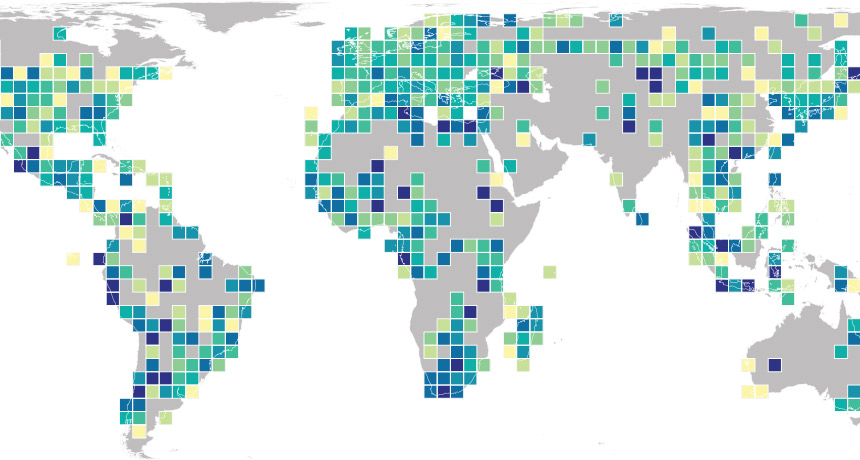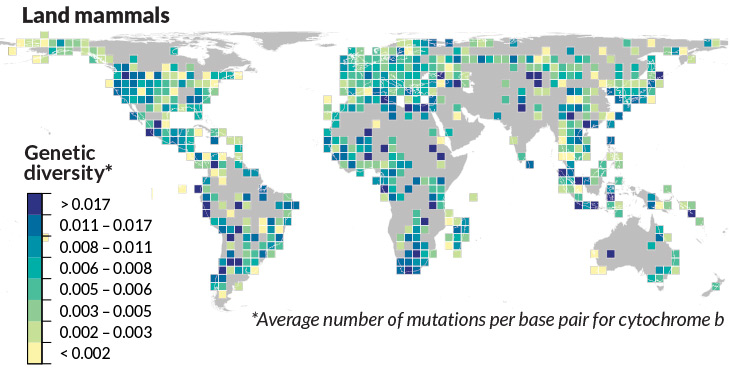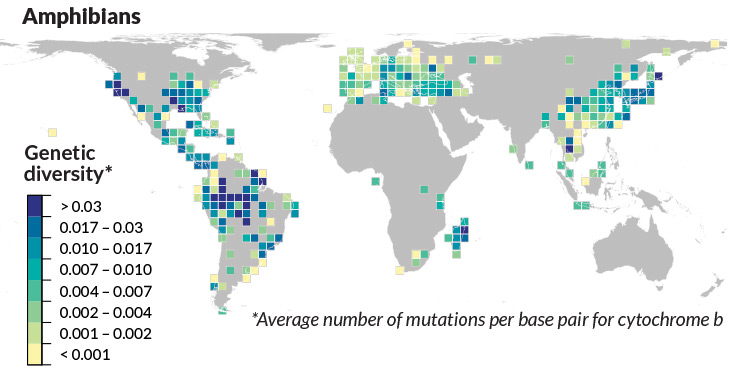Maps show genetic diversity in mammals, amphibians around the world
Charts provide a baseline to study humans’ effects on species

A DIFFERENT WAY TO MAP BIODIVERSITY Maps of genetic diversity within mammal and amphibian species provide a baseline for understanding the effects of human activity and climate change on animals.
Michael K. Borregaard, A. Miraldo et al/Science 2016







